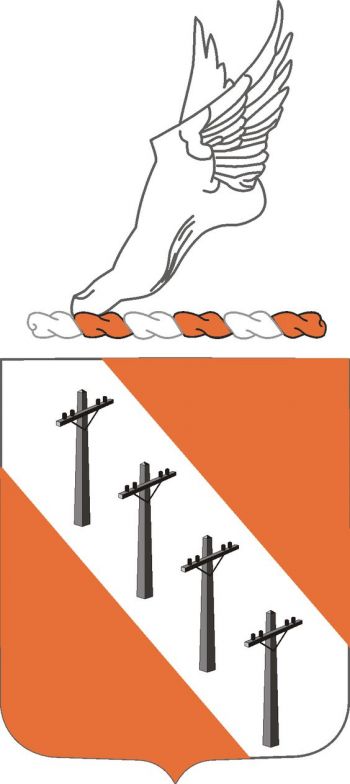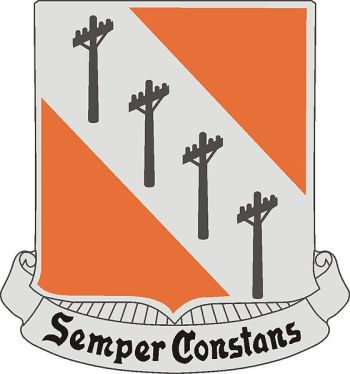51st Signal Battalion, US Army: Difference between revisions
Knorrepoes (talk | contribs) m (Text replacement - "↵↵↵Literature" to " Literature") Tags: Mobile edit Mobile web edit |
Knorrepoes (talk | contribs) m (Text replacement - "Category: " to "Category:") |
||
| Line 24: | Line 24: | ||
[[Category:Military heraldry of the United States]] | [[Category:Military heraldry of the United States]] | ||
[[Category: Army heraldry]] | [[Category:Army heraldry]] | ||
[[Category: Granted 1926]] | [[Category:Granted 1926]] | ||
Revision as of 09:23, 15 October 2023
51ST SIGNAL BATTALION, US ARMY
| (Coat of Arms) |
(Distinctive Unit Insignia) |
Official blazon
Shield: Tenné, on a bend Argent four telegraph poles in pale cross arm normal to bend Sable.
Crest: On a wreath of colors (Argent and Tenné) the right winged foot of Mercury Argent.
Motto: SEMPER CONSTANS (Always Constant).
Distinctive Unit Insignia. Description: A Silver color metal and enamel device 1 1/8 inches (2.86 cm) in height consisting of shield blazoned: Tenné, on a bend Argent four telegraph poles in pale cross arm normal to bend Sable. Attached below the shield a Silver scroll inscribed "SEMPER CONSTANS" in Black letters.
Origin/meaning
Orange and white are the colors traditionally associated with the Signal Corps. The bend is taken from the arms of Lorraine and St. Mihiel, and represents two campaigns for which the unit was awarded streamers. The four telegraph poles represent the four engagements of the battalion during World War I. Crest: The winged foot of Mercury represents rapidity in the delivering of messages.
The coat of arms was approved on 14 January 1926. The distinctive unit insignia was approved on 11 July 1926.
Literature: Image from Olompvo on Pinterest. Information from The Institute of Heradry, US Army.

